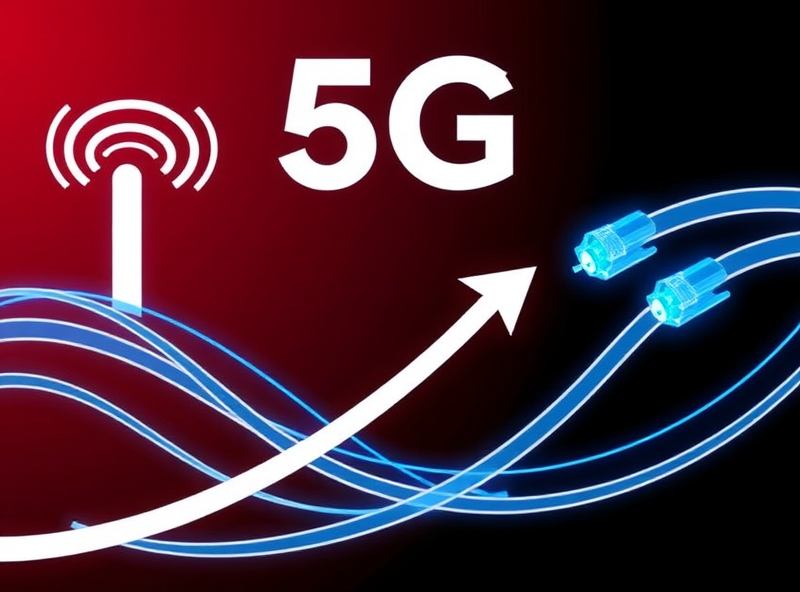
AT&T (T) Stock: A Comprehensive Look at the Telecom Giant for Investors

When you think about staying connected—making phone calls, browsing the internet on your mobile device, or streaming your favorite TV shows—AT&T is one of the major players that makes it all possible. As one of the largest telecommunications companies in the world, AT&T plays a foundational role in the digital infrastructure that supports modern life. But what does this mean for investors? To understand the investment potential of AT&T (NYSE: T), it’s important to explore the company’s core businesses, its recent strategic shifts, and the broader dynamics of the telecom industry.
A Connectivity-First Business Model
AT&T has transformed from a traditional telephone provider into a diversified telecommunications and technology company. While it once ventured into media and entertainment, its recent strategic pivot brings the focus back to its core strength: connectivity. Today, AT&T is primarily centered on two segments—Mobility and Wireline.
Mobility
The Mobility segment is the heart of AT&T’s business. It includes wireless voice and data services for consumers and businesses, encompassing both postpaid and prepaid mobile plans. This also includes connected devices like tablets and smartwatches. Key performance indicators in this segment include postpaid subscriber growth, average revenue per user (ARPU), and the adoption of 5G services.
AT&T’s investment in 5G is central to its growth strategy. This includes acquiring wireless spectrum and deploying infrastructure like small cells and fiber backhaul to enhance network speed and capacity. While competition from Verizon and T-Mobile is fierce, AT&T’s scale and established customer base remain advantages.
Wireline
The Wireline segment includes broadband internet, voice services, and enterprise connectivity solutions. AT&T Fiber—its high-speed internet service—is a critical growth driver, especially as demand for bandwidth surges due to remote work, streaming, and smart home technologies. Unlike traditional copper-based services, fiber offers higher speeds and scalability.
AT&T continues to expand its fiber network, which puts it in direct competition with cable providers like Comcast and Charter. Meanwhile, its legacy DSL and landline voice services are in gradual decline but still contribute to total revenue.
Strategic Repositioning: A Leaner, More Focused AT&T
In recent years, AT&T has significantly reshaped its business. Once aiming to become a vertically integrated telecom-media giant, the company made major acquisitions like DirecTV and Time Warner. However, the media strategy proved challenging, and AT&T chose to unwind these moves to refocus on its core.
-
DirecTV was spun off.
-
WarnerMedia was spun off and merged with Discovery to form Warner Bros. Discovery.
These divestitures have helped AT&T streamline operations and reduce debt, allowing leadership to concentrate on building out its 5G wireless and fiber broadband networks. For investors, this represents a return to fundamentals—connectivity is once again the company’s clear focus.
Financial Overview and Free Cash Flow
AT&T’s financial health hinges on revenue and margins from its Mobility and Wireline segments, but perhaps the most critical financial metric for investors is free cash flow (FCF). FCF is the cash left over after capital expenditures (CapEx), which can be used to pay dividends, reduce debt, or reinvest in the business.
AT&T invests heavily in its infrastructure, with billions spent annually on 5G and fiber buildouts. Despite these outlays, the company has historically been a strong generator of free cash flow.
Managing its debt load remains a top priority. The divestiture of media assets has helped reduce total debt, but AT&T continues to emphasize debt reduction as part of its capital allocation strategy. Rising interest rates are a concern, as they increase the cost of servicing debt.
Dividends: A Key Appeal for T Stock
One of AT&T’s biggest draws for investors is its dividend yield. Even after the dividend was reset lower following the WarnerMedia spinoff, the stock continues to offer one of the higher yields in the market.
The company is committed to a sustainable dividend that balances investor returns with the need for ongoing investment in its core network infrastructure. While dividend growth may be modest, AT&T’s predictable revenue stream from essential services provides a solid foundation for consistent payouts.
Competitive Landscape and Market Risks
AT&T operates in a highly competitive and capital-intensive industry. In wireless, the company competes with Verizon and T-Mobile, where customer acquisition often hinges on pricing, network quality, and device promotions.
In broadband, competition is intensifying as cable and fiber providers fight for market share in overlapping geographies. AT&T’s ability to expand its fiber footprint and deliver reliable service is crucial for long-term success.
The telecom sector is also shaped by regulatory developments, spectrum auctions, and the rapid evolution of technologies like fixed wireless, edge computing, and satellite internet. While the demand for connectivity is relatively recession-resistant, AT&T is not immune to economic headwinds, cost inflation, or disruptive innovation.
Key Risks to Monitor
-
Execution risk on 5G and fiber rollout
-
Pricing pressure from competitors
-
Debt management in a rising-rate environment
-
Technology disruption from alternative networks
-
Potential regulatory changes
Investors should also consider that the telecom industry requires constant reinvestment in infrastructure just to remain competitive.
Conclusion: A Stable Dividend Play in a Tech-Driven World
AT&T is no longer chasing media empires—instead, it’s doubling down on what it does best: providing the connectivity that powers our everyday lives. With a renewed focus on Mobility and Wireline services, the company is better positioned to meet the demands of a digital economy. Its high dividend yield, vast customer base, and significant investments in 5G and fiber make it a compelling option for income-focused investors seeking stability in a volatile market.
For long-term investors evaluating T stock, it’s essential to monitor AT&T’s ability to execute its network expansion, grow subscribers, manage debt, and sustain free cash flow. While challenges remain, AT&T’s strategic clarity and role as a core utility of the information age give it enduring relevance in the communications sector.







